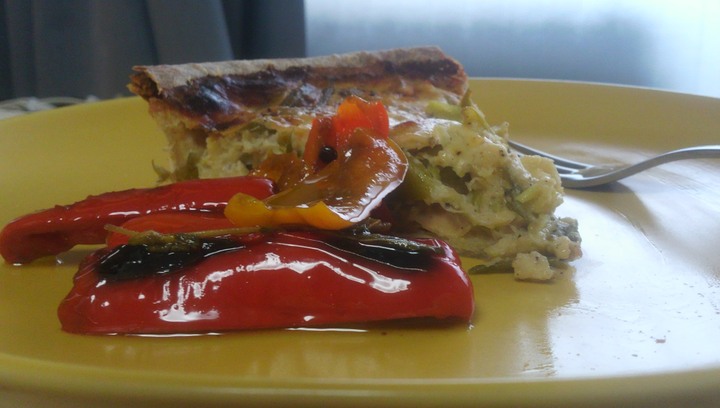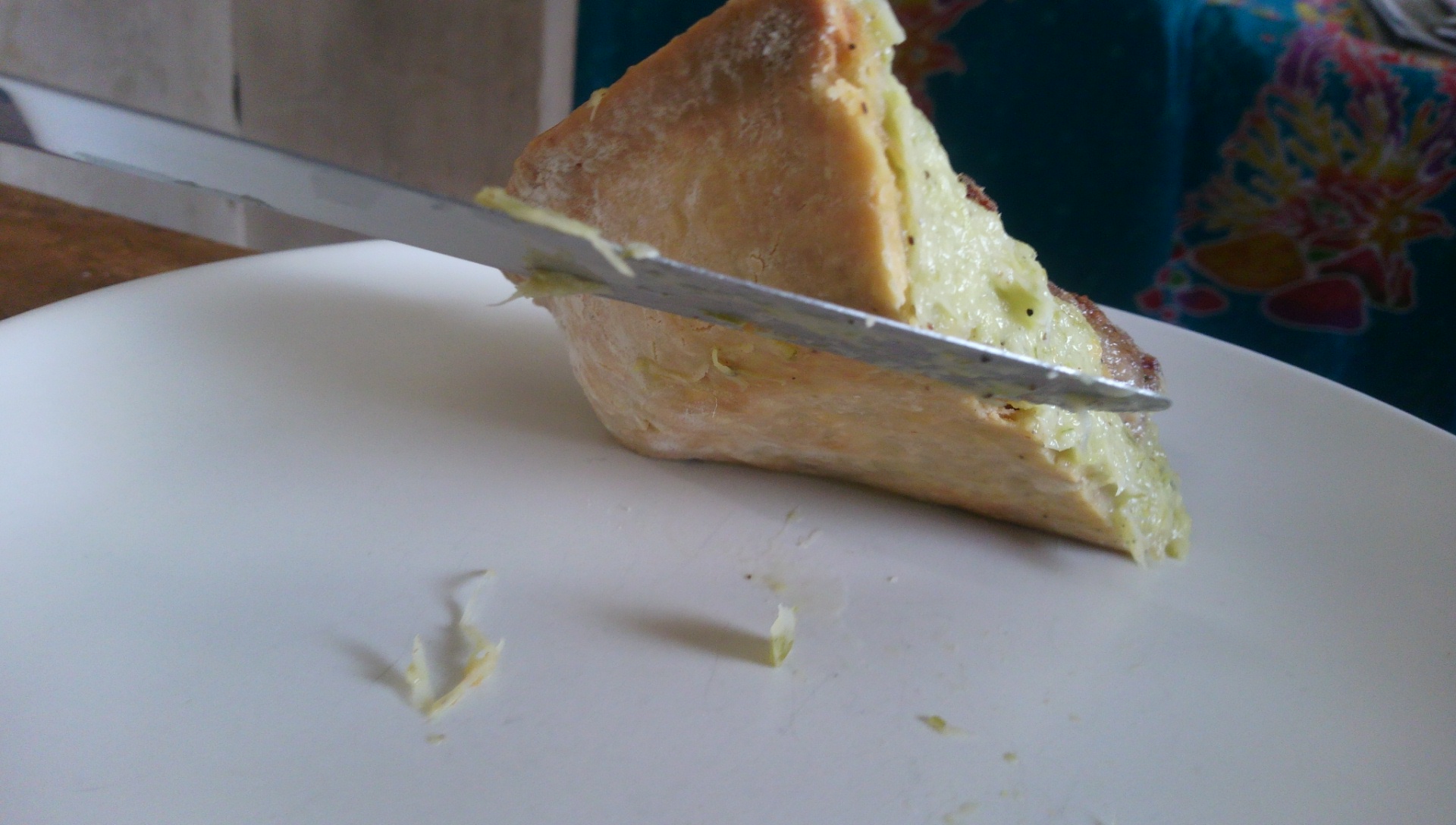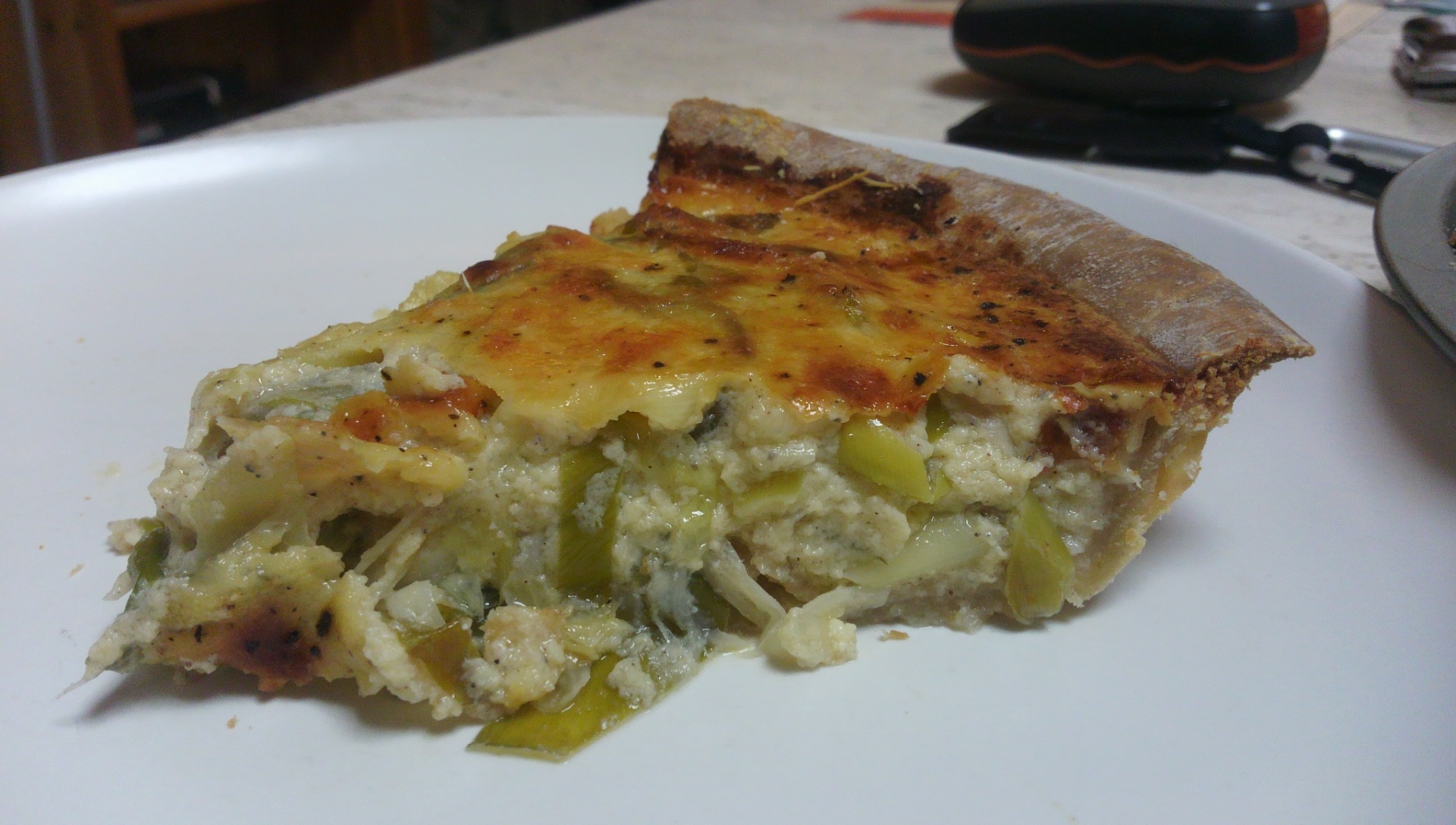-
Posts
1,728 -
Joined
-
Last visited
Content Type
Profiles
Forums
Store
Help Articles
Posts posted by Blether
-
-
...and he's a bar bouncer.
 )
)Hahaha!
I've generally cooked thicker cuts of meat - prime rib, tri-tip - by searing quickly in a good hot pan to get a good browning reaction and then finishing at about 200. Based on Blether's post I may try the low-slow method and see how that works....
YMMV Smithy, but I wouldn't do that to a premium meat like prime rib, unless you're talking about low as in SV-low temps, which I guess will not give you the browning. The lamb shoulder roast is a way to do high-connective-tissue "stewing" style meat so it's done right through (meltingly so), but with a roasted surface. (The timing I gave is for a boneless shoulder of the size that I had).
Two iterations in previous posts are here and here - the crisp parchment that the fatcap leaves behind is absolutely phenomenal. If there's some shoulder left you get to make shepherd's pie like here. Autumn is coming!
-
 1
1
-
-
As I've posted before, I roast lamb shoulder low & slow - like 6 hours at 130C, no temperature change. It's ideal for meat with more connective tissue, and browns beautifully.
With meats that can be eaten rarer, you have other options, of course. The standard approach I grew up with was the high-then-lower one. There's the old saw about "sealing in the juices", which I think's a fairy story.
I'm interested to hear the responses you get, too.
-
Hi, bdfseo1. It's great to have someone knowledgeable to share Indian recipes on eG.
For those who cannot easily buy such a thing ready-made, can you explain a little about Pav Bhaji Masala? What are the central ingredients, and in what proportion? What are the optional ingredients?
Also, in which part or parts of India is Pav Bhaji most common?
-
Yeah, the rolling-out is the most irksome part. I wish I could get decent ready-made crust. Was it good? Do you have a regular brand, and how much does a crust cost you?
-
I wish I had. It's a loooong time since I made any myself, and I don't have the recipe any more - I think BBC recipes are normally reliable, and out of the first few Google hits their classic recipe looks good. The best recipe I have in a book here is similar and leaves you to pick your own pickling spice mixture from the typical (long) list of candidates.
-
 1
1
-
-
Thanks, Kim. Your quiche crust looks great!
-
... What else might I do with these? Ideas, anyone?
It doesn't get round the processing problem, but would an apple chutney be enough of a change from apple relish to be worthwhile to you?
-
Yes, "Garam masala" means "hot mix", specifically spices that warm the body rather than spices that are hot in the mouth, though there's a crossover, with black pepper in particular being "hot" in both ways.
I think cumin is the most characteristic spice of Indian cuisine of the kind you describe, but the flavour we think of as "curry" is about 1/3 cumin, 2/3 coriander, and some spice from pepper or chillis. Heat level to taste.
-
 2
2
-
-
This curry-style baked chicken from Delia Smith is easy and good: Chicken with Whole Spices - one of my housemates when we were students made it a lot.
-
More details: the roast sat on a low cookie-type rack set in a large shallow pan (edges about 1 inch tall). The oven was a cheap GE model; it goes down to 170F but the actual temp inside as measured by oven thermometer was closer to 160F.
Thanks.
-
Got it - it was the browning in particular that threw me. 160F is like 77C, which is close to sous vide, but without the vide. Do you know what it was roasted in? What oven holds that temp?
-
 1
1
-
-
(A second slice of) leek & parmesan quiche, with Italian marinated peppers. Quiche re-warmed from the fridge with two 30-second MW bursts, and a rest in between.

-
 5
5
-
-
... A 14-pound prime rib, from French & Brawns in Camden, roasted at 160F for seven hours and served with its jus. Meltingly tender:
Great stuff, Patrick, in all of these posts. I think I want some of everything.
You didn't really roast at 160F, though, did you?
-
That sounds like a standard sweet shortcrust, but with the butter cut back by about a quarter. Does that sound about right to you? It's great to have pie dough in the freezer, isn't it?
-
 1
1
-
-
Started with stuffed zucchini flowers.. ricotta and anchovies. ..
... For dessert homemade cherry pie and chocolate chip ice cream
Hey, bc, looking good as usual. You mentioned your pie crust earlier: what are your secrets?
-
I regard the two packets of plastic bags I keep on the open shelf above the sink as essential to my batterie de cuisine. The soft, clear, polythene kind, not the rustly super-thin ones. They're similar to the bgas that some commercial bread comes in, and I use them every day for all sorts of things. I wait till the bread's cold, bag & freeze. I suck the air out like a reverse of blowing up a crisp (chip) bag when I was a kid.
Delia Smith wrote that if you're keeping bread even for a few days, it's better if you do it in the freezer than the fridge or the room. And she was right.
I'd say an eggs sufficiently more than 50% water for you to need to revise that. Try 75%?
-
It's the consistency of the sylta in your photo that reminded me of it.
-
That sounds like Scottish potted hough (though hough is shin, of course... and you won't find anyone putting sour cream on it).
-
We got a bento at yesterday's location shoot. The quality was good.

-
 4
4
-
-
...
Blether – gorgeous quiche! I love the looks of the leeks – so melty and tender...
Thank-you, Kim
 Your cheese naans look great!
Your cheese naans look great!A week earlier I made this Quiche aux Saucisses et Poireaux


- using my home-ground bulk sausage instead of chipolatas (and getting the girth very different!), shaped and rolled in flour.

That's what put me in mind of a hybrid when I wanted to use up some of my Parmy Reggie. Half the amount of leeks, stop before pureeing them, make up with quiche custard and the cheese. I particularly like this combination. Like JG's, and as she says of it, it's a complete meal by itself. I've used a low-fat crust, the custard is milk not cream, and with parmesan packing so much flavour relative to the weight you use, it's very much less rich (and less expensive) than quiches at there most extravagant can be.
-
 5
5
-
-
(And too late to ETA) you also have eggs in there. How you account for those in 'hydration', I don't know, but eggs being mostly water you will need to account for them in any comparison.
-
I'm not sure whether to 'like' this, or call it out for not being a sweet. You're still on the cheese course

-
 1
1
-
-
While you're waiting for the heroes, what's stopping you from holding them in the freezer? Bread is good for that.
For a hydration comparison, you'd need to add up your wheat & potato flours (including the slurry) and separately the amount of water (ditto). You can do that if you want. Hydration is water weight as a %age of flour weight. But hydration willl affect your rise and texture rather than keeping.
The secret to most eG searching is to use the selection to return results "as posts" not "as a topic list".
I have no actual experience of using additives to make bread last longer, since I use my freezer. I use it after baking and before - you can hold the dough unrisen or part-risen.
Oh, except that i put a tbsp of (olive) oil in my loaves, and that's to do with a crumb that stays moist, more than flavour. And in the summer I even keep the loaf that I'm currently going to the kitchen to cut slices off, in the fridge. In this moist heat the mold is phenomenal.
-
Another one o' them quiche's. Leek & parmesan, with 3/4tsp of freshly & finely ground black pepper:


- with some romaine lettuce on the side.
-
 12
12
-



Dinner 2014 (Part 5)
in Cooking
Posted · Edited by Blether (log)
I turned this beautiful fresh side of wild autumn salmon
... into these fishcakes: